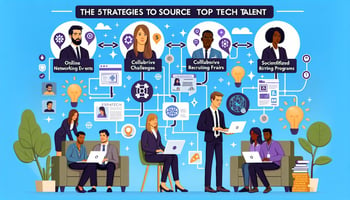Mastering the Art of Effective Recruitment: A Step-by-Step Guide
Understanding Your Recruitment Needs
Before setting out to find the perfect candidate, it's crucial to understand the specific needs of your organization. Start by analyzing the role that needs to be filled. Determine the skills, experience, and personality traits that will contribute to success in the position. This understanding will guide you throughout the entire recruitment process and ensure that you are looking for the right qualities in potential candidates.
Crafting a Compelling Job Description
A well-crafted job description is the cornerstone of effective recruitment. This document should clearly outline the responsibilities of the position, the qualifications required, and the attributes that would make a candidate a good fit for your organizational culture. Use inclusive language and focus on what your company can offer the candidate in terms of growth opportunities and benefits, in addition to what you are asking for in terms of skills and experience.
Sourcing Candidates Strategically
Finding the right candidates requires casting a wide but strategic net. Utilize multiple sourcing methods including online job boards, social media, employee referrals, and professional networks. Consider reaching out to passive candidates who may not be actively looking for a new job but possess the perfect set of skills. Attending industry networking events and online forums can also uncover hidden talent.
Screening Candidates Effectively
With a pool of applicants in hand, the next step is to screen them effectively to identify those who are most suited for the job. Begin with a review of their resumes and cover letters, focusing on their experience and qualifications. After narrowing down your list, proceed with initial phone or video interviews to further assess their fit for the role. This will allow you to get an insight into their communication skills and enthusiasm for the position.
Conducting In-Depth Interviews
When you've identified your top candidates, it's time to dive deeper with in-person interviews. Use behavioral interview techniques to learn how candidates have handled situations in the past. Consistency is key; ensure that all candidates are asked the same set of questions for an unbiased evaluation. This is also the time to promote your company culture and values, giving the candidate a view of what it's like to work within your organization.
Evaluating Candidates and Making the Decision
After the interviews, evaluate candidates based on their responses, skills, cultural fit, and potential for growth. It's helpful to use a structured approach or scoring system to compare applicants objectively. Remember, the decision should not be rushed; take your time to consider all factors before making an offer.
Extending the Offer and Negotiating Terms
Upon selecting the ideal candidate, it's time to extend a job offer. Be prepared to negotiate terms such as salary, benefits, and start date. It's important to maintain flexibility while also being clear about the limits and constraints of your organization. Once an agreement is reached, provide a formal offer letter including all the agreed-upon terms.
Onboarding and Retention
Effective recruitment doesn't end with a signed contract. Onboarding is a critical process to ensure the successful integration of the new employee into your company. Have a structured plan in place for training, team introductions, and early career support. A positive onboarding experience can increase employee retention and ensure long-term success for both the employee and the company.
Continuously Improving the Recruitment Process
Lastly, recruitment should be viewed as an ongoing process that can always be improved. After each hire, review what worked and what didn’t. Collect feedback from new hires and the hiring team to identify areas for enhancement. Continuously adapting and refining your strategies will lead to more effective recruitment and a stronger organization as a whole.





